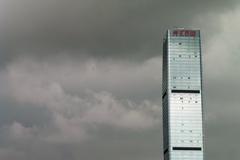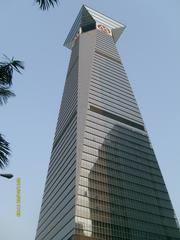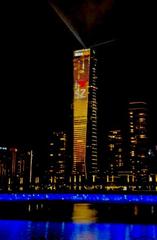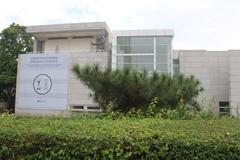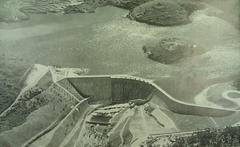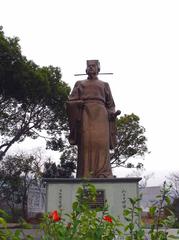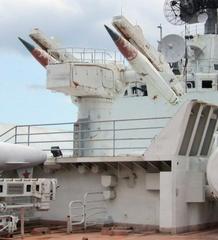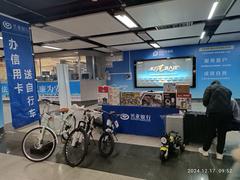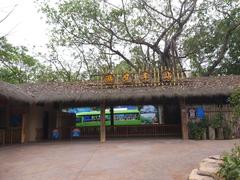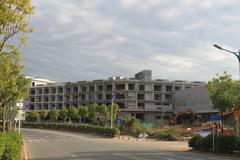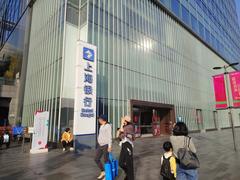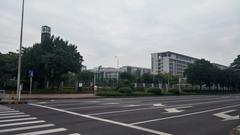
Bihaiwan Station Shenzhen: Visiting Hours, Tickets, and Travel Guide
Date: 04/07/2025
Introduction
Bihaiwan Station (碧海湾站), situated in the dynamic Bao’an District of Shenzhen, China, serves as a modern and vital transit hub on Shenzhen Metro Line 11. Opened in June 2016, the station is a key connector between western Shenzhen, the city center, Shenzhen Bao’an International Airport, and the Greater Bay Area. As Shenzhen has grown into a global metropolis, its urban rail transit system—embodied by efficient stations like Bihaiwan—has played a crucial role in shaping its sustainable and connected future.
Bihaiwan Station is more than a simple transit point. It offers gateways to tranquil parks, lively waterfront developments, and proximity to both historical sites and modern business zones. This detailed guide covers the station’s layout, ticketing, visiting hours, accessibility, nearby attractions, and practical tips to help you have a seamless and enriching experience in Shenzhen (thenandnows.com; urbanrail.net; EastChinaTrip Metro Map).
Table of Contents
- Introduction
- Historical Evolution of Shenzhen
- The Role of Urban Rail Transit
- Bihaiwan Station: Origins and Architecture
- Visiting Hours and Ticket Information
- Station Layout, Facilities, and Accessibility
- Nearby Attractions and Connectivity
- Practical Visitor Tips
- Frequently Asked Questions (FAQ)
- Summary Table: Nearby Highlights
- Conclusion
- References
1. Historical Evolution of Shenzhen
Shenzhen’s journey from an ancient settlement to a global city is remarkable. With archaeological evidence indicating over 6,700 years of human habitation, the region was integrated into imperial China during the Qin dynasty as part of Nanhai Commandery (thenandnows.com). Over centuries, it evolved through significant administrative changes, becoming Bao’an County in the early centuries AD.
During the Tang and Song dynasties, its strategic coastal position made it a hub for salt and spice trade. The Yuan dynasty recognized the area for pearl production, while the Ming era saw sailors praying for safe voyages at the Mazu temple in Chiwan. Qing dynasty policies led to demographic shifts, especially during coastal evacuations in response to Ming loyalist rebellions.
The 20th century brought further changes: the Kowloon-Canton Railway (1911) enhanced regional connectivity, and the influx of refugees during periods of turmoil accelerated population growth. Shenzhen’s pivotal transformation began in 1980 with its designation as China’s first Special Economic Zone (SEZ), spurring unprecedented economic and urban development. By 2025, Shenzhen’s population exceeded 13 million, and it had become a model for rapid, innovative urbanization and cross-border cooperation (urbanrail.net).
2. The Role of Urban Rail Transit
Shenzhen’s rapid expansion demanded efficient, sustainable transit solutions. The Shenzhen Metro, operational since 2004, now consists of 17 lines and over 567 kilometers of track, ranking among the world’s largest metro systems (urbanrail.net; tunnelsandtunnelling.com). The system’s integration with the Hong Kong MTR enables seamless cross-border travel.
Metro development has followed the city’s urban planning, with each phase targeting growth in specific districts and supporting transit-oriented development. Green, intelligent, and efficient operations are hallmarks of the metro’s design philosophy, reflecting Shenzhen’s commitment to sustainability.
3. Bihaiwan Station: Origins and Architecture
Bihaiwan Station, located at the intersection of Baoyuan Road and Gongle Road in Xixiang Subdistrict, Bao’an District, is on the express Line 11, which connects western districts with central business areas and the airport (sztrans.fandom.com; wikipedia). The name “Bihaiwan” translates to “Blue Sea Bay,” referencing the Pearl River estuary and the region’s maritime heritage.
The two-level underground station features an island platform and five exits. Its blue and white color scheme honors the local maritime tradition. Notable is its “Building Dreams” art wall, celebrating the metro’s construction and spirit. Upgrades in 2023 introduced integrated passenger and cargo logistics in partnership with SF Express, furthering its role as a multi-modal transit hub (sztrans.fandom.com).
4. Visiting Hours and Ticket Information
- Operating Hours: Daily from approximately 6:30 AM to midnight; extended hours during holidays (metroeasy.com).
- Ticketing:
- Single-journey tokens: Purchase at station vending machines; fares start at ¥2 and depend on distance.
- Shenzhen Tong cards: Rechargeable cards with discounted fares for frequent travel.
- Mobile payments: QR code scanning with Alipay or WeChat Pay accepted.
- Accessibility: Elevators, tactile paving, and clear bilingual signage support all passengers.
5. Station Layout, Facilities, and Accessibility
Structure & Navigation
- Platform: Island platform, two tracks (Line 11, both directions); platform level B2.
- Concourse Level (B1): Ticket vending, security screening, passenger information displays.
- Exits: At least four main exits (A–D), each leading to key locations such as Bihaiwan Park, bus stops, commercial streets, and taxi stands.
- Accessibility: Elevators, ramps, tactile paving, accessible restrooms, and clear signage.
Amenities
- Ticket machines, staffed counters, fare gates (accepting Shenzhen Tong, QR codes, tokens)
- Ample seating, air conditioning, and priority seating
- Clean restrooms with baby-changing facilities
- Convenience stores, vending machines, ATMs, free Wi-Fi, device charging
- Lost & found service, security presence, and CCTV monitoring
6. Nearby Attractions and Connectivity
Parks and Waterfronts
- Bihaiwan Park: Green space ideal for walks, jogging, and sunset views (Trip.com Moments: Bao’an Attractions).
- OH BAY: Waterfront development with Ferris wheel, boardwalks, cafes, and entertainment (EastChinaTrip: Things to Do in Shenzhen).
- Shenzhen Bay Park: 13 km of coastline, walking and cycling, city and bay views (Asia Odyssey Travel).
Cultural & Shopping Districts
- Shekou & Sea World: Cosmopolitan dining, nightlife, and arts scene (Deep China Travel).
- OCT-LOFT Creative Culture Park: Art galleries, live music, creative markets (Deep China Travel).
- Dafen Oil Painting Village: Hundreds of art studios and galleries (Deep China Travel).
- Huaqiangbei Electronics Market: One of the world’s largest electronics markets (Asia Odyssey Travel).
- Window of the World: Iconic theme park with miniature global landmarks (China Discovery).
- Civic Center & Futian CBD: Modern architecture, museums, and parks (Asia Odyssey Travel).
Connectivity
- Line 11: Connects to Shenzhen Bao’an International Airport, city center, and intercity rail.
- Bus, Taxi, Ride-Hailing: Designated stops and clear signage for easy transfers (Baidu Baike).
- Greater Bay Area: Direct metro links to Guangzhou, Dongguan, and Hong Kong (Travel China Guide).
7. Practical Visitor Tips
- Avoid Rush Hours: Travel outside 7:30–9:30 AM and 5:30–7:30 PM for a more comfortable experience.
- Apps & Maps: Use local navigation apps (Amap, Baidu Maps) or the Shenzhen Metro Official App for route planning and real-time updates (Deep China Travel).
- Payment: Mobile payments and Shenzhen Tong cards are fastest; keep some cash for small purchases.
- Language: Bilingual signage is widespread; translation apps may assist in less touristy areas.
- Safety & Cleanliness: Security checks are mandatory, and cleanliness is maintained to high standards (HikersBay: Shenzhen Travel Tips).
- Accessibility: Facilities accommodate travelers with disabilities and families.
- Weather: Shenzhen is humid; bring water, sunscreen, and an umbrella during summer.
8. Frequently Asked Questions (FAQ)
Q: What are the operating hours of Bihaiwan Station?
A: Daily from approximately 6:30 AM to midnight.
Q: How can I buy tickets at Bihaiwan Station?
A: Use vending machines, staffed counters, or mobile payment (QR code, Shenzhen Tong).
Q: Is the station accessible for disabled travelers?
A: Yes, with elevators, tactile paving, and accessible restrooms.
Q: Which attractions are near Bihaiwan Station?
A: Bihaiwan Park, OH BAY, Shenzhen Bay Park, Shekou, OCT-LOFT, and more.
Q: Is luggage storage available?
A: There is no dedicated storage, but the station accommodates luggage screening and has spacious areas.
Q: Are guided tours available?
A: No official tours depart from the station, but many operators include nearby attractions in their packages.
9. Summary Table: Key Attractions Near Bihaiwan Station
| Attraction | Type | Distance/Access | Highlights |
|---|---|---|---|
| Shenzhen Bay Park | Waterfront Park | Walking distance | Boardwalks, cycling, sunset views |
| Shekou & Sea World | Dining/Entertainment | Short metro/taxi ride | International cuisine, nightlife |
| Window of the World | Theme Park | Metro transfer | Miniature landmarks, performances |
| OCT-LOFT | Art District | Metro transfer | Galleries, creative events |
| Dafen Oil Painting Village | Art/Culture | Metro transfer | Art studios, painting shopping |
| Huaqiangbei | Shopping/Tech | Metro transfer | Electronics market, gadgets |
| Civic Center & Futian CBD | Culture/Business | Metro transfer | Museums, parks, modern architecture |
10. Conclusion
Bihaiwan Station is emblematic of Shenzhen’s modernization, serving as a user-friendly and accessible hub for both daily commuters and visitors. It offers efficient links to the city’s green spaces, cultural districts, and commercial centers, and exemplifies Shenzhen’s sustainable, transit-oriented urban development.
Use this guide to plan your visit, take advantage of the city’s modern infrastructure, and explore the many attractions accessible from Bihaiwan Station. For real-time metro updates and travel assistance, download the Audiala app and consult official Shenzhen Metro resources.
11. References
- thenandnows.com
- urbanrail.net
- tunnelsandtunnelling.com
- sztrans.fandom.com
- metroeasy.com
- EastChinaTrip Metro Map
- Trip.com Metro Guide
- Deep China Travel
- Asia Odyssey Travel
- Travel China Guide
For images, include high-quality photos of the station, nearby parks, and a metro map with alt tags such as “Bihaiwan Station visiting hours” and “Bihaiwan Station tickets.” For site navigation and SEO, link to other Shenzhen metro station guides and city travel tips.




